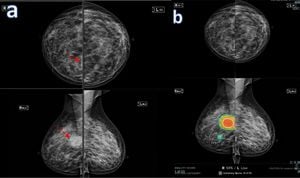Neonatal care faces significant challenges, particularly when diagnosing respiratory diseases among low birth weight preterm and high-risk infants. These patients often require portable X-ray imaging, yet the quality of such images tends to be inadequate for accurate diagnosis. This situation can delay treatment and exacerbate health risks. To tackle these obstacles, researchers have developed BO-CLAHE, or Bayesian Optimization Contrast Limited Adaptive Histogram Equalization.
This novel method optimally adjusts the hyperparameters of CLAHE, enhancing the quality of neonatal chest X-ray images prior to analysis using deep learning models. The process is especially relevant for conditions like Transient Tachypnea of the Newborn (TTN), which can be misdiagnosed as Respiratory Distress Syndrome (RDS).
“Increasing radiation exposure is not an option for these sensitive patients, so enhancing image quality through preprocessing is imperative,” notes the article's authors. Current methods for enhancing images have limitations, often requiring manual hyperparameter tuning, which is both inefficient and time-consuming.
By integrating Bayesian optimization with CLAHE, BO-CLAHE not only streamlines this process but also significantly improves the classification accuracy of lesions. A comprehensive evaluation using various classification models, including GoogleNet and DenseNet161, demonstrated remarkable performance of BO-CLAHE-enhanced images, particularly with TTN diagnosis.
Results revealed mean accuracy and F1 scores dramatically surpassing those of original, unenhanced images. For example, the paper cites the GoogleNet model achieving accuracy of 0.9 and F1 score of 0.94 when diagnosing TTN with images enhanced by BO-CLAHE.
“The enhanced images allow for clearer visualization of anatomical structures and pathological features,” the authors explain, highlighting the method's capability to aid clinicians. This leads to expedited diagnostics, which is especially important for neonatal patients where every moment counts.
The method is backed by extensive experiments where traditional enhancement techniques were compared with BO-CLAHE, showing significant performance improvements across various metrics, including recall, precision, and AUC (Area Under the Curve). These findings strongly advocate for the adoption of BO-CLAHE as part of standard imaging protocols.
Clinically, these advancements mean healthcare providers can make more informed decisions, reducing diagnostic errors associated with poor image quality. The study emphasizes the importance of refining imaging techniques, which plays a pivotal role not just in classification but also potentially impacts treatment outcomes.
The contributions of this research extend beyond mere technical improvements; they signify advancements toward more reliable medical imaging practices for some of the most vulnerable patient populations. With BO-CLAHE offering not only enhanced imaging quality but also decreased radiation exposure risks, it champions the future of neonatal diagnostic practices.
Going forward, integrating BO-CLAHE with AI-based diagnostic tools can add another layer of efficiency, streamlining workflows, and enhancing patient care. This study marks a significant step toward improving neonatal healthcare by setting new standards for imaging protocols.



